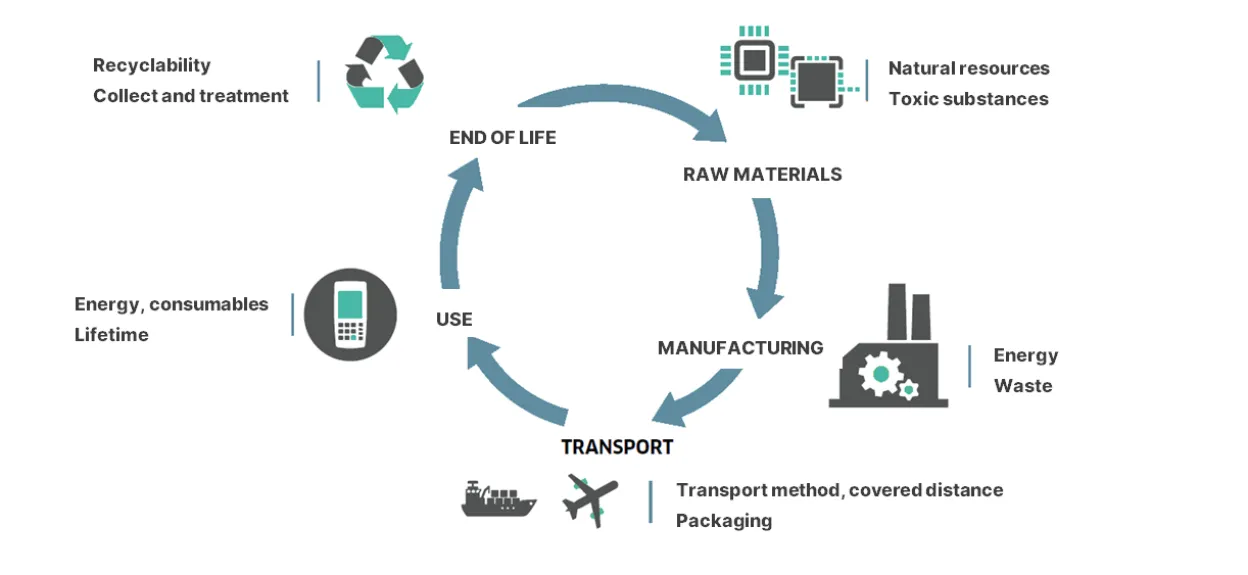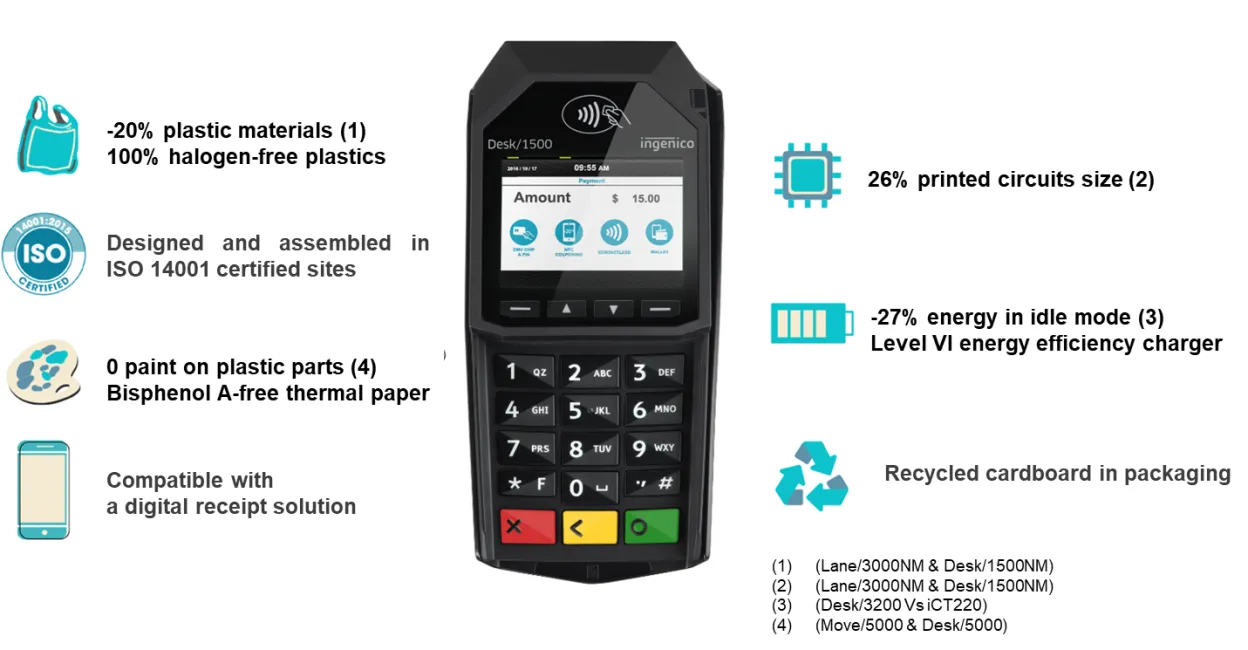Eco-designing payment terminals: a fundamental pillar of your Corporate Social Responsibility (CSR) strategy

Discover how Ingenico has managed to significantly reduce the environmental footprint of its payment terminals through its eco-design approach, at the heart of its CSR strategy.
The eco-design of payment terminals is not a “nice-to-have” anymore. It is an obligation for every sustainable and responsible company. At Ingenico we have put in place an innovative and preventive product-oriented approach to protecting the environment. Being the leader in payments starts with an eco-responsible attitude.
The Covid-19 pandemic has accelerated the use of digital payment across the globe. This shift from coin and paper-based payments means that the number of POS (point of sale) terminals are increasing rapidly. According to analysis by Ingenico, there are 110 million terminals installed globally (including mPOS) and the expected growth rate is 3% per annum over the next 3 years.
But with this growth comes responsibility; not only to consider the impact the increased number of devices has on areas such as financial inclusion, (a debate for another day), but also the environmental impact of the manufacturing process of payment terminals, their transportation, use, maintenance and end-of-life processing.
The efficient eco-design of payment terminals sits at the heart of Ingenico’s Corporate Social Responsibility strategy. It aims to design, develop and offer products that are increasingly environmentally friendly. This innovative and preventive methodology, which considers every stage of the product life cycle, has enabled us to significantly reduce the footprint of our payment terminals over the past three years.
Embracing the methodology of eco-design
Eco-design is a virtuous approach which not only takes environmental requirements into account, (regulations, customer expectations, the organisation’s environmental policy), but also the environmental impact.

This strategy has allowed Ingenico to rethink its products in a more responsible and sustainable way, by adopting a global eco-design model which analyses the life cycle of our payment terminals:
The critical stage of reducing any impact occurs at the very beginning, the design of the payment terminal. Indeed, it is the creation of each product’s blueprint which determines their future environmental profile.
Through careful research and development, Ingenico has focused on the following key factors:
- Reducing the raw materials used and eliminating toxic substances
- Integrating sustainable procurement into the supply chain
- Reducing the carbon footprint of logistics
- Optimising the energy efficiency of terminals
- Recyclability of terminals and recycling schemes for end-of-life devices
The results of this research have been realised through a significantly reduced environmental footprint, notably decreasing the use of raw materials (such as plastic), the size of printed circuit boards and energy consumption. These ‘greener’ payment terminals deliver a range of benefits through their eco-design:

Why green is our favourite colour
Ingenico is serious about sustainable innovation. Over the next five years, we will be working to make our payment terminals 100% PVC-free and to supply our full product range in recycled packaging. Other initatives will see energy consumption reduced by increasing the number of terminals with an energy saving mode, and efforts to expand digital receipt alternatives, (where local regulations allow), will also continue.
But environmental strategy doesn’t just encompass the physical product, it applies to services too. Ingenico’s recently launched Terminal as a Service model (TaaS), delivers a sustainable procurement strategy, giving our customers the support they need to refurbish and reuse our products, as well as a ‘take back and recycle’ program.
Ultimately, we want to offer all our customers and end-users products and solutions that offer safety, simplicity and environmental friendliness, so that when a business is making a choice about which terminal to buy and considering the responsibilty of their own environmental footprint, they can do so with confidence.
By implementing more sustainable practices, Ingenico is demonstrating that it’s possible to remain the leader by delivering best-in-class products whilst creating positive economic, social and environmental impacts. So, if Green and profitable go together, is Green the new Blue Ocean strategy?...










